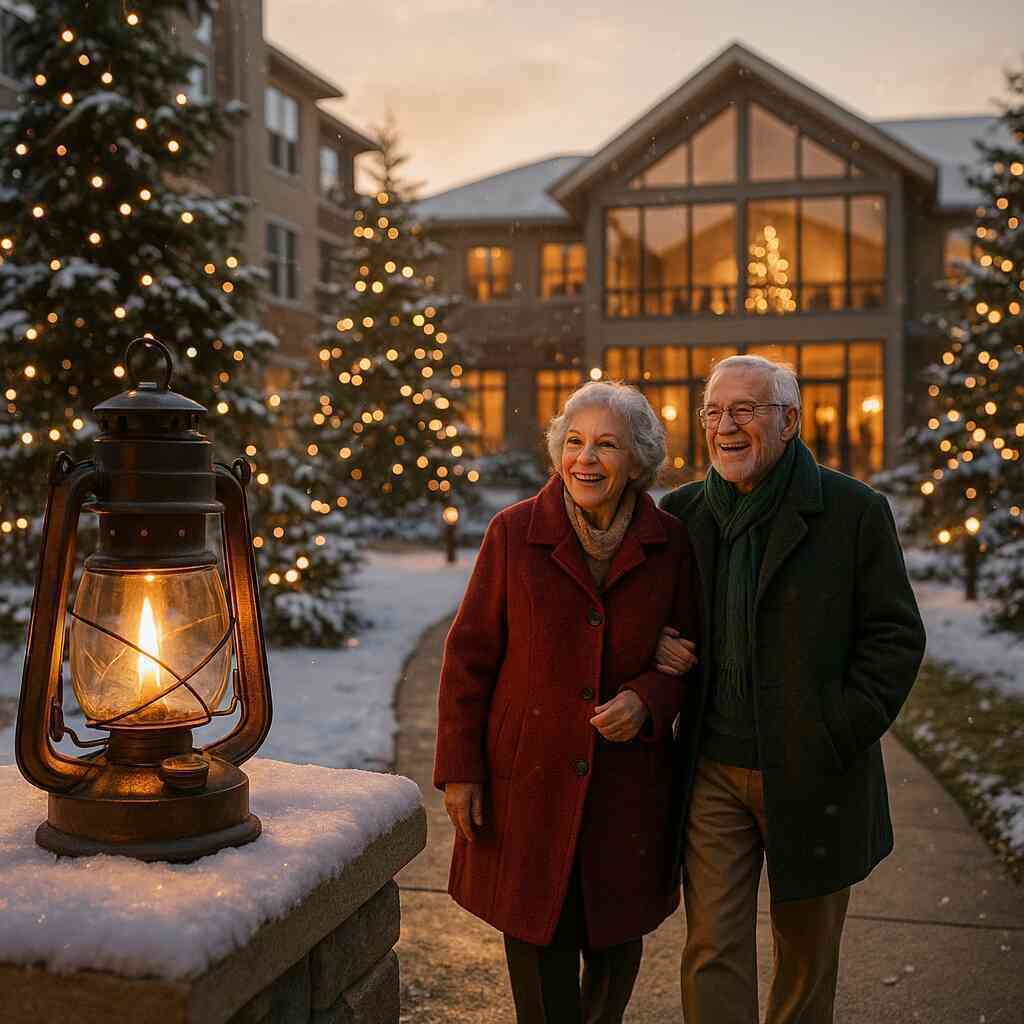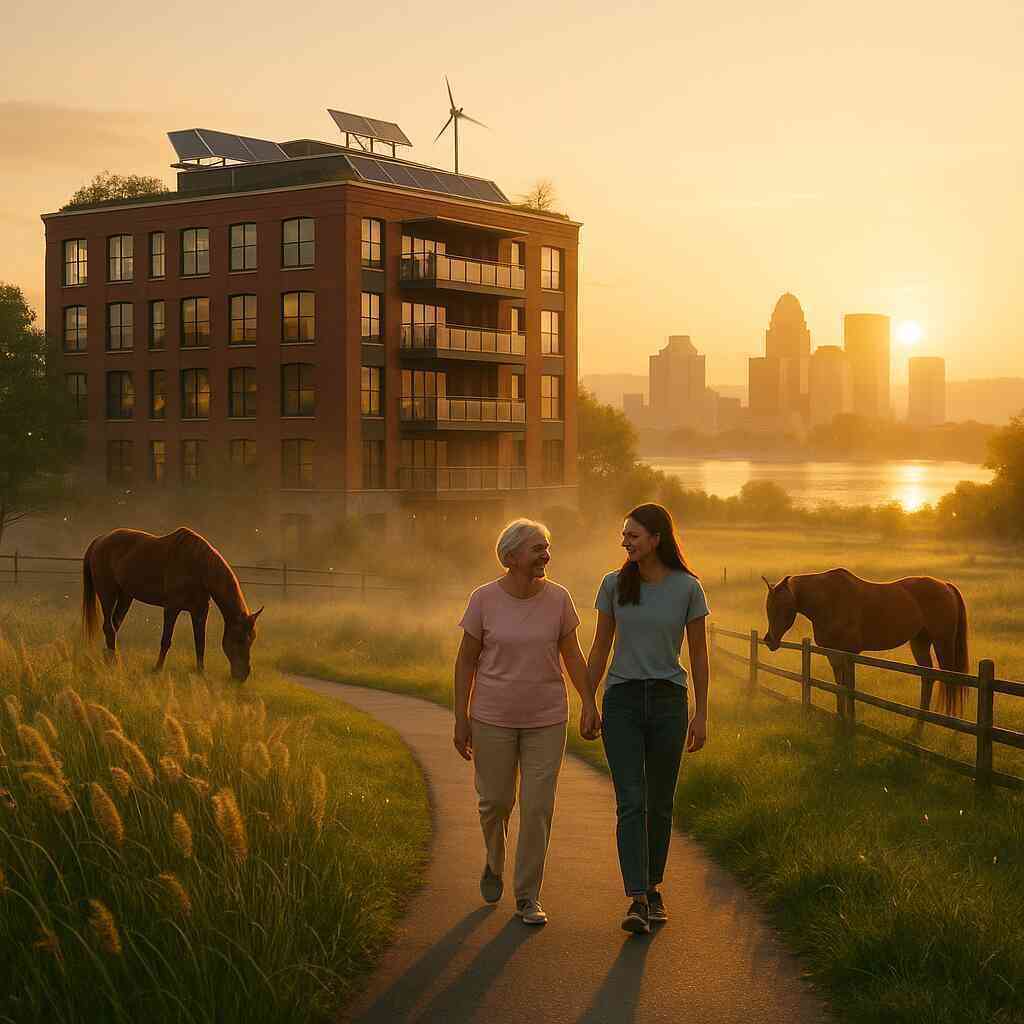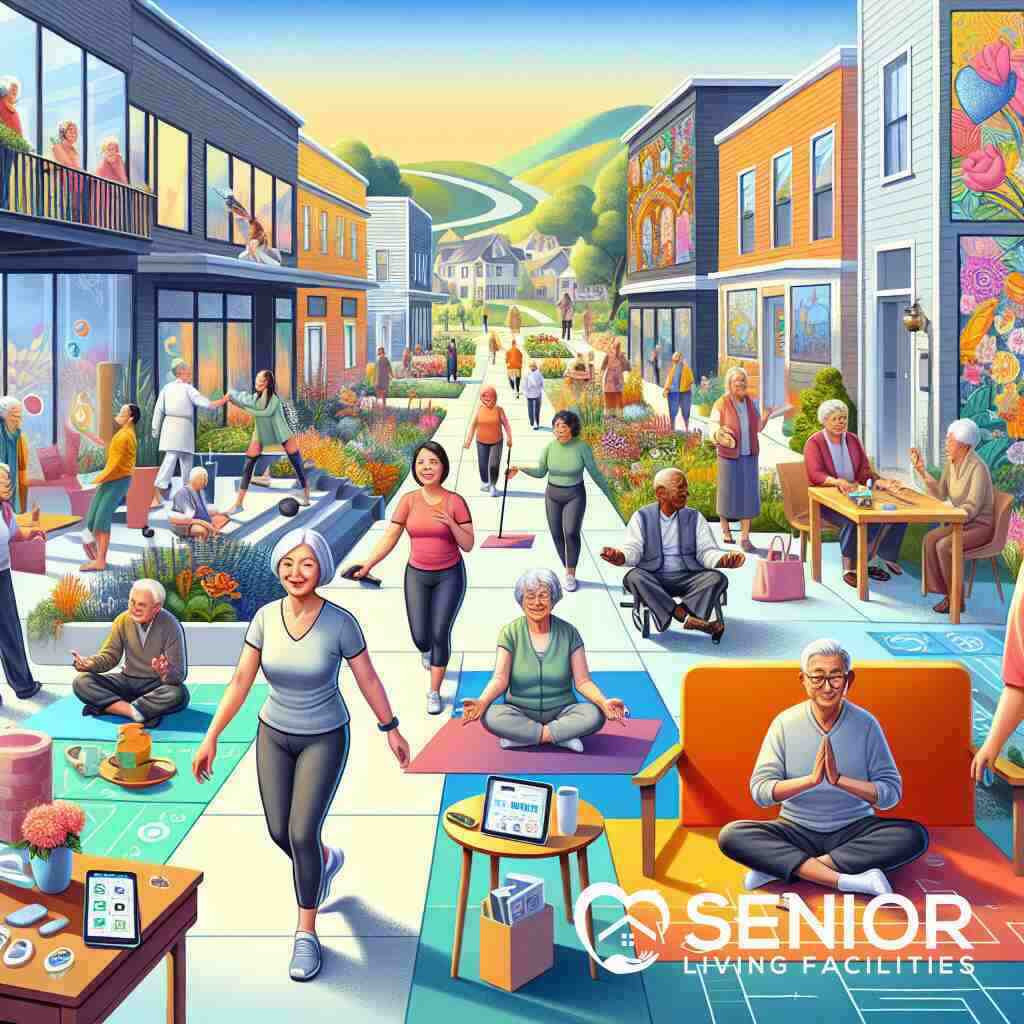
What Are the Foremost Challenges Senior Living Facilities Address
August 6, 2025
Introduction: Shaping the Future of Senior Living
Understanding the Multifaceted Needs of an Aging Population
Senior living facilities face the complex task of addressing the diverse needs of an aging population. As the baby boomer generation reaches retirement age, the demand for accommodating their specific preferences and requirements has surged. Understanding the aging population’s needs is essential for creating environments that support both independence and assisted living. These facilities must balance providing supportive care while encouraging autonomy, aiming to foster an atmosphere where residents can thrive both mentally and physically. Additionally, facilities need to offer various options, from independent living communities to more comprehensive care plans, ensuring each resident’s unique needs are met. Listening and adapting to these evolving needs is crucial for designing the ideal senior living experience.
The Importance of Senior Living Facilities in Today’s World
In today’s fast-paced world, senior living facilities play a critical role in providing more than just shelter. They serve as hubs of engagement, healthcare, and community for older adults who require support beyond what their families can offer. These facilities are instrumental in ensuring safety and well-being, often acting as bridges between independent living and intensive care. Moreover, they provide access to a network of healthcare professionals, social workers, and fellow residents, forming a robust support system that helps alleviate many of the elder care obstacles typically faced by families. As the demographic landscape shifts, the importance of these facilities in accommodating the growing senior population cannot be overstated.
How Senior Living Facilities Strive for Quality Care and Connection
Quality care and meaningful connections are at the heart of what senior living facilities aim to offer. These communities strive to foster environments where seniors can connect with peers and maintain a high quality of life through engagement and shared experiences. For instance, the promotion of personalized elderly care ensures that residents receive attention tailored to their individual health and emotional needs. Furthermore, facilities are increasingly adopting elder care technology to enhance resident experiences, offering innovative solutions that improve communication, safety, and healthcare delivery. By continually evolving to meet the changing needs of their residents, senior living facilities work towards a future where every senior feels valued, connected, and cared for effectively.
Tackling Healthcare Complexities and Geriatric Care Coordination
Navigating Healthcare for Seniors: Challenges and Solutions
Senior living facilities face significant healthcare challenges, dealing with diverse needs that span from basic care to complex medical conditions. The intricacies of healthcare for seniors involve unifying medical, emotional, and daily living support. Balancing these elements requires facilities to maintain robust healthcare partnerships and technology systems to ensure comprehensive care is accessible. Many senior living facilities turn to innovative solutions, including telehealth services and advanced monitoring systems, to provide quality care. Addressing senior care challenges involves crafting personalized care plans and continuous engagement between caregivers, residents, and families, ensuring health services meet individual needs effectively.
The Role of Dementia Care and Memory Care Facilities
Dementia and memory-related issues present dementia care hurdles that require specialized approaches within senior communities. Facilities offering dementia care are designed to provide safety, support, and stimulation for affected residents. They integrate structured environments and targeted therapies to improve cognitive functions and sustain quality of life. Memory care facilities’ challenges often involve maintaining an optimal balance between independence and supervision, ensuring residents can enjoy their surroundings while staying safe. Addressing these challenges includes ongoing staff training and family education, facilitating environments where neurological health and dignified living coexist harmoniously.
Geriatric Care Coordination: Balancing Multiple Healthcare Services
Geriatric care coordination is a critical component in managing an aging population’s diverse healthcare needs. It involves creating integrated care plans that account for multiple healthcare services, from nursing to therapy and specialized consultations. Effective coordination requires seamless communication and collaboration among healthcare providers, ensuring every aspect of a resident’s healthcare for seniors journey is managed efficiently. Facilities that succeed in geriatric care coordination excel in aligning their resources to anticipate and respond to residents’ evolving needs, ultimately enhancing resident satisfaction and overall care quality. This meticulous balance is crucial for providing a cohesive and supportive environment, promoting the well-being and thriving of seniors.
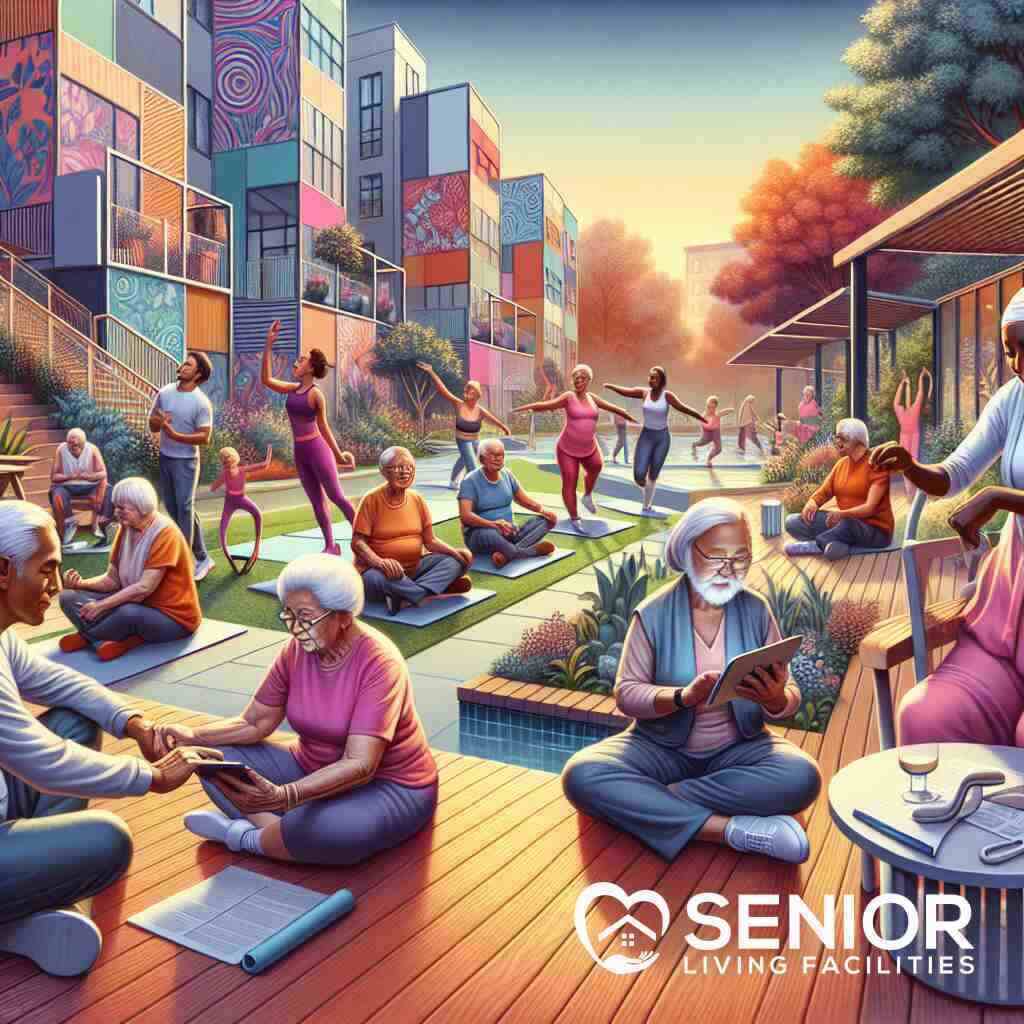
Ensuring Safety and Access to Senior Community Activities
Senior Community Safety: From Infrastructure to Emergency Protocols
Senior living facilities prioritize senior community safety by ensuring that their infrastructure meets the needs of the elderly. Facilities are designed with accessibility in mind, incorporating features like handrails, ramps, and non-slip flooring to prevent falls. Beyond the physical layout, implementing comprehensive emergency protocols is essential for safety. Regular staff training and clear communication channels ensure quick responses to emergencies, safeguarding the community. Read more about community safety practices that underline these strategic implementations.
Moreover, senior living communities often conduct regular safety drills involving residents, helping them become familiar with procedures. This involvement not only reinforces security but also empowers residents, making them active participants in their safety. Through constant monitoring and proactive planning, these facilities address elder care obstacles, promoting a secure, worry-free living environment.
Engagement Activities as a Pillar of Quality of Life for Seniors
Engagement activities form the backbone of enhancing the quality of life for seniors within living communities. Programs are designed to stimulate mental, physical, and emotional well-being, providing diverse options from art classes to fitness sessions. These activities offer more than entertainment; they create vibrant social opportunities that deepen connections among residents.
Tailored activities are instrumental in maintaining cognitive health and preventing cognitive decline, which is persistent among the aging population. Frequent participation not only enriches daily life but also contributes significantly to resident satisfaction in senior housing. Creating environments where seniors thrive involves recognizing the critical role of engagement in fostering community spirit.
The emphasis on connection and interaction extends to family involvement. Many facilities host family days and encourage visits, strengthening ties between residents and their loved ones. Such inclusive approaches ensure that seniors receive comprehensive support, nurturing a holistic sense of belonging.
Adopting Elder Care Technology for Improved Resident Experiences
Incorporating technological advancements represents a shift towards enhanced care and safety, exemplifying elder care technology adoption. State-of-the-art systems such as smart home devices and health monitoring wearables are transforming the ways senior living facilities operate. These technologies enhance communication, allowing residents to stay in touch with family and staff effortlessly.
Furthermore, technology aids in streamlining healthcare services by enabling efficient monitoring of vital signs and medication adherence, reducing errors, and facilitating prompt medical responses. Facilities equipped with robust technological infrastructure can significantly improve resident experiences and engagement.
Implementing technology also offers profound benefits in safety and crisis management, featuring systems that provide real-time alerts and location tracking. Such innovations fortify security measures, promoting a reliable and responsive living environment. Through continuous investment in digital tools, senior living facilities can offer unparalleled support, elevating the overall quality of life for their residents.
Addressing the Emotional and Financial Aspects of Senior Living
Emotional Challenges in Senior Living: Supporting Mental Well-being
The transition to a senior living community often involves significant emotional adjustments for residents. Among the most prevalent emotional challenges in senior living is the sense of isolation and loss of independence that can accompany this move. These challenges can lead to feelings of depression and anxiety if not properly addressed. Facilities must prioritize supporting mental well-being by fostering environments that encourage social interaction and community engagement. Promoting meaningful relationships among residents and staff can mitigate the emotional distress residents might experience. Programs focused on mental health awareness and support are essential, providing resources such as counseling and therapy to help seniors navigate this transitional phase smoothly.
Integration of family involvement further alleviates the emotional strain, as regular visits and activities involving loved ones can strengthen familial bonds. These efforts are not only beneficial for mental health but also enhance the overall living experience for seniors. Facilities acknowledging emotional challenges in senior living effectively focus on comprehensive care that prioritizes both physical and psychological health.
Senior Housing Affordability: Financial Planning and Options
Navigating the financial landscape of senior housing poses a formidable challenge for many families. Understanding senior housing affordability is crucial for planning a sustainable future in a senior living community. With diverse options available, families must evaluate the costs associated with independent living, assisted living, and long-term care facilities. Financial planning for seniors includes assessing potential resources, such as savings, long-term care insurance, and government assistance programs that can offset expenses.
Collaborating with financial advisors who specialize in elder care planning can offer insights into structuring costs effectively. Assistance from these advisors helps families compare the pricing structures and services offered across facilities. Cost transparency is imperative, allowing informed decisions that do not compromise the quality of care. Senior living facilities committed to affordability often offer flexible payment plans, such as monthly rentals or entrance fee models, which accommodate varying financial capabilities.
Quality of Life and Resident Satisfaction in Diverse Senior Communities
Ensuring a high quality of life for seniors is paramount in fostering resident satisfaction in senior living communities. Diverse communities cater to specific needs and preferences, promoting environments where seniors can thrive. Creating spaces that respect cultural, linguistic, and lifestyle differences enhances the sense of belonging and individuality among residents.
Facilities that emphasize the importance of comprehensive wellness programs significantly contribute to residents’ physical and emotional well-being. From nutritional plans to recreational activities, facilities must create a balanced lifestyle that encompasses health, happiness, and fulfillment. This holistic approach encourages active participation and engagement in community events, promoting vivacious and fulfilling daily living experiences.
Resident feedback is also crucial in maintaining high satisfaction levels, as ongoing evaluations of programs and services lead to continuous improvement. Facilities that actively seek and incorporate resident input into their operational strategies outline a commitment to unparalleled care and consideration, ensuring that all seniors feel valued and empowered within their communities.
Navigating Regulatory and Staffing Challenges in Assisted Living
Understanding Assisted Living Complexities and Compliance
Assisted living facilities contend with distinct complexities and compliance requirements that set the standard for operations across the sector. Crucial assisted living complexities include navigating state-specific regulations designed to ensure safety and quality care for residents. Facilities must adhere to these guidelines, which can vary significantly between states, to maintain licensure and avoid legal repercussions. Additionally, ensuring regulatory compliance necessitates a profound understanding of nuanced local and federal laws governing senior care. Achieving assisted living compliance demands ongoing education and procedural audits. The commitment to upholding senior living compliance not only safeguards the facility’s reputation but also bolsters community trust.
Furthermore, compliance extends beyond health and safety protocols, encompassing aspects such as staff qualifications, resident rights, and financial transparency. By continuously adapting to regulatory updates, senior living facilities can effectively mitigate risks and foster environments where residents thrive. Ultimately, this intricate balance of maintaining high standards and aligning with regulatory expectations underscores the essential role of compliance in achieving operational excellence.
Senior Living Compliance: Upholding Health Standards and Regulations
Ensuring residents’ safety and well-being is paramount, prompting senior living facilities to prioritize compliance with stringent health standards. This adherence ensures that residents receive care in line with robust regulations aimed at mitigating health risks. Facilities must engage deeply with senior living health standards, as they dictate the quality and extent of healthcare services provided, from emergency response protocols to daily medication management. Upholding these standards involves more than meeting minimum requirements; facilities strive for excellence by continuously refining their processes.
Complying with nursing home regulations guarantees a uniform commitment to resident welfare, often necessitating thorough record-keeping and meticulous attention to detail. Challenges arise from the dynamic nature of health guidelines, requiring facilities to remain agile in implementing new practices promptly. By fostering close partnerships with health authorities and investing in staff training, communities can proactively address compliance challenges.
These efforts ensure that residents live in environments characterized by meticulous care and a dedication to safety. Seamless integration of standards into daily operations fortifies the facility’s reputation and enhances residents’ trust and satisfaction. Such compliance not only protects residents’ health but also elevates the community’s overall care quality.
The Art of Building a Qualified and Compassionate Senior Facility Staff
Crafting a senior living community capable of addressing diverse resident needs begins with assembling a skilled and empathetic staff. The art of building a qualified senior facility staff lies in selecting individuals who exhibit both technical proficiency and compassion for elder care. Facilities must prioritize ongoing training and professional development to cultivate expertise in elder care, enabling staff to address complex health and emotional needs adeptly. Moreover, fostering a culture of compassion and respect enhances staff-resident interactions, enriching the caregiving experience.
A competent team is integral to overcoming senior facility staffing challenges in the ever-evolving landscape of senior care. Recruitment strategies should focus on candidates with robust medical knowledge and a genuine passion for serving the aging population. Recognizing the vital role of a supportive workplace culture, facilities should promote teamwork and open communication. By acknowledging staff contributions and providing resources for career growth, facilities can reduce turnover and maintain a stable, experienced workforce.
In essence, the success of a senior facility hinges on its ability to blend the nuances of medical expertise with an environment that champions empathy and understanding. Harnessing these qualities fosters a positive living atmosphere, ultimately benefiting residents and staff alike. A diverse and adeptly managed team is critical to advancing the facility’s mission of delivering exemplary care to all residents.
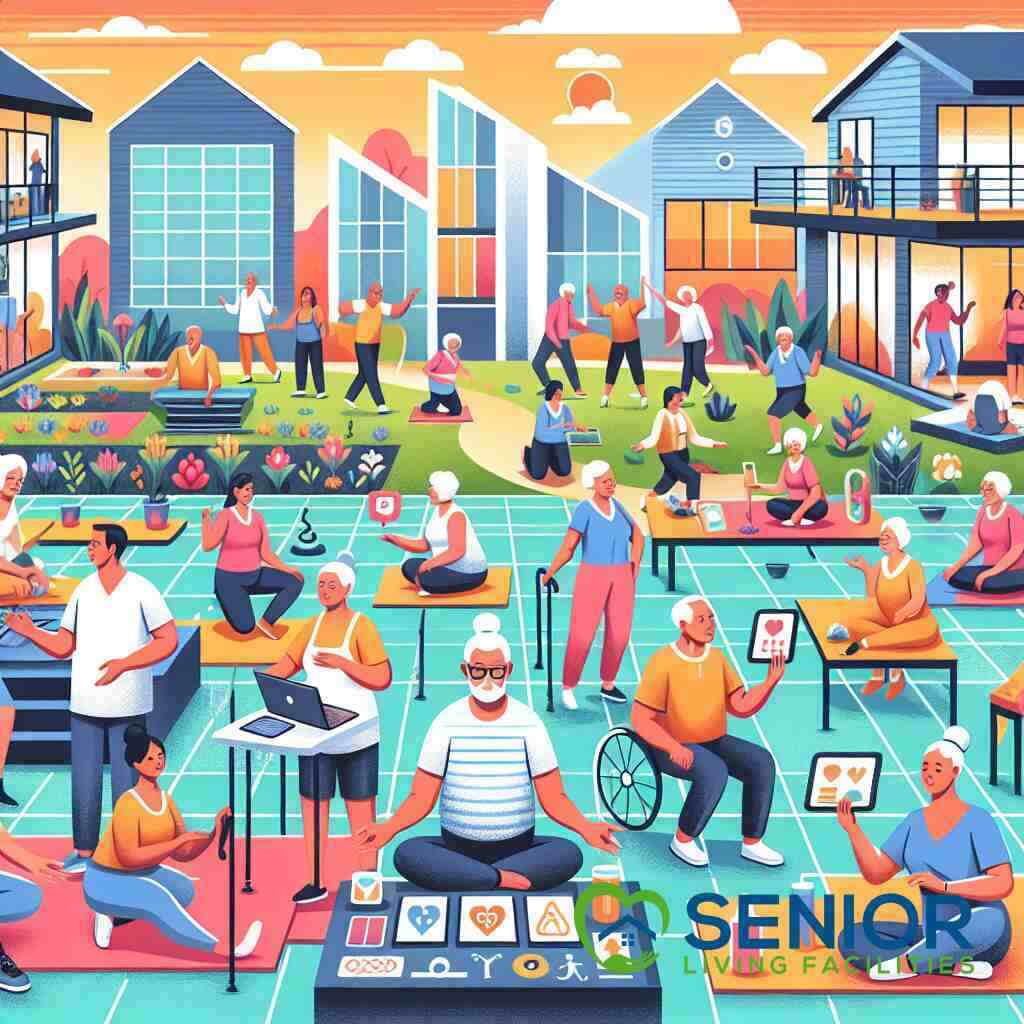
Conclusion: Forging Resilient Pathways for Tomorrow’s Seniors
Reimagining Senior Living Facilities for the Future
As we look towards the future, reimagining senior living facilities demands a focus on flexibility and innovation to meet the continually evolving needs of our aging population. By embracing the intricacies of senior facilities’ infrastructure, we can develop living environments that balance modern amenities with age-friendly designs, ensuring seniors maintain autonomy and comfort. The integration of cutting-edge technology alongside traditional community values will foster seamless living experiences tailored to individual preferences. By exploring diverse living models and housing options for seniors, we can pave the way for communities that truly reflect the dynamic and vibrant nature of senior life.
Embracing Innovation and Empathy in Elder Care
The future of elder care hinges on a delicate balance between innovative advancements and compassionate support. Embracing technology in elder care provides seniors with more connected, safer, and enriching living experiences. This innovation should be complemented by a deep understanding of their emotional and physical needs, which are central to elder care practices. Training staff to employ empathy-driven interactions can transform facilities into sanctuaries of comfort and care. Such an approach ensures that seniors feel heard, respected, and valued-a critical component in fostering trust and security within the community. By integrating these principles, senior living facilities can effectively address lingering challenges and improve overall resident satisfaction.
Building a Sustainable Community for Seniors
Creating sustainable senior communities involves concerted efforts to ensure environmental, economic, and social sustainability. Facilities should incorporate green building practices, enhance resource efficiency, and reduce waste to contribute positively to the planet while promoting healthier living environments. Economically, offering affordable yet high-quality living options allows seniors to receive the care they deserve without financial strain. However, sustainability also requires a commitment to social equity, ensuring that every senior, regardless of background or circumstance, has access to safe, engaging, and harmonious communities. By aligning strategic goals with these sustainability principles, senior living facilities can forge resilient pathways that respect and support the well-being of every resident. Engaging families and local communities further enriches this mission, creating a vibrant and inclusive fabric that sustains and empowers seniors.
With continued progress and dedication, senior living communities can front the transformative change needed for the aging population to thrive. Contact senior living facilities to discover how these advancements can be tailored to meet your needs.
Frequently Asked Questions
Question: How do Senior Living Facilities address the emotional challenges in senior living, and what support is available for mental well-being?
Answer: Senior Living Facilities recognizes the significant emotional challenges that can arise when transitioning to a new community. To address these emotional challenges in senior living, our facilities prioritize fostering environments that encourage social interaction and community engagement. Programs focused on mental health awareness provide resources such as counseling and therapy, helping seniors navigate transitional phases smoothly. Additionally, promoting meaningful relationships among residents and staff can mitigate emotional distress, enhancing the overall living experience for our seniors. By focusing on comprehensive care that prioritizes both physical and psychological health, we ensure that residents feel supported and valued.
Question: What steps are taken by Senior Living Facilities to ensure senior community safety, especially regarding infrastructure and emergency protocols?
Answer: At Senior Living Facilities, ensuring the safety of our senior community is a top priority. Our facilities are designed with accessibility in mind, incorporating features like handrails, ramps, and non-slip flooring to prevent falls. Beyond infrastructure, we implement comprehensive emergency protocols to safeguard our community. Regular staff training and clear communication channels ensure quick responses to emergencies. Additionally, we conduct safety drills involving residents to help them become familiar with procedures. These efforts not only empower residents as active participants in their safety but also address elder care obstacles and promote a secure, worry-free living environment.
Question: In the blog post ‘What Are the Foremost Challenges Senior Living Facilities Address’, what innovations are highlighted to improve resident experiences through elder care technology adoption?
Answer: The blog post highlights the importance of elder care technology adoption in transforming resident experiences. At Senior Living Facilities, we incorporate state-of-the-art systems such as smart home devices and health monitoring wearables, enhancing communication and allowing residents to stay in touch with family and staff effortlessly. These technologies also streamline healthcare services, enabling efficient monitoring of vital signs and medication adherence. Facilities equipped with robust technological infrastructure can significantly improve resident experiences and engagement, offering unparalleled support and elevating the overall quality of life for residents.
Question: How do Senior Living Facilities manage healthcare complexities and geriatric care coordination to ensure comprehensive healthcare for seniors?
Answer: Managing healthcare complexities is crucial for us at Senior Living Facilities. To ensure comprehensive healthcare for seniors, our facilities maintain robust partnerships and technology systems that unify medical, emotional, and daily living support. We utilize innovative solutions, such as telehealth services and advanced monitoring systems, to provide quality care. By creating personalized care plans and facilitating continuous engagement between caregivers, residents, and families, we ensure that healthcare services meet individual needs effectively. Our approach to geriatric care coordination involves seamless communication and collaboration among healthcare providers, enhancing resident satisfaction and overall care quality.
Question: What initiatives do Senior Living Facilities undertake to make senior housing affordability more achievable for families?
Answer: Understanding the financial challenges families face, Senior Living Facilities take proactive steps to make senior housing affordability more achievable. We offer diverse options, allowing families to evaluate costs associated with different living arrangements. Our facilities provide flexible payment plans, such as monthly rentals or entrance fee models, accommodating varying financial capabilities. Additionally, we collaborate with financial advisors specializing in elder care planning to assist families in structuring costs effectively. By helping families navigate resources like savings, long-term care insurance, and government assistance programs, we ensure that our residents receive high-quality care without financial strain.
